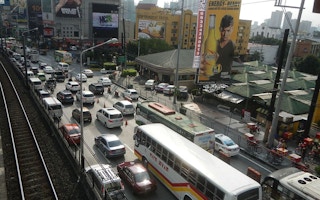The Asian Development Bank (ADB) has awarded a US$100 million dollar loan to the Philippines to support the administration’s plan to ramp up infrastructure development.
Improved infrastructure is needed mainly to tackle the archipelago’s severe traffic congestion problems; the facility is estimated to spur US$3.8 billion in spending on roads, railways, bridges, flood control, ports, and airports.
“Better infrastructure will lower the cost of doing business, shorten travel times, and usher in more economic opportunities in remote areas,” Richard Bolt, ADB country director for the Philippines, said in a statement.
The loan will go directly to the Department of Transportation and the Department of Public Works and Highways which is preparing flagship infrastructure projects worth between US$160 billion and US$180 billion over the next six years.
“
Better infrastructure will lower the cost of doing business, shorten travel times, and usher in more economic opportunities in remote areas.
Richard Bolt, ADB country director, the Philippines
The rising investment by the government of the Philippines on an infrastructure program called Build, Build, Build is the centerpiece of President Rodrigo Duterte’s 10-point socioeconomic agenda, which aims to increase public spending on infrastructure from 5.3 per cent this year to 7.4 per cent of GDP by 2022.
In an update of its latest annual economic report, ADB said that massive spending on infrastructure will help the Philippines to surpass earlier economic growth forecasts.
Last April, the ADB gave a GDP growth rate forecast of 6.4 per cent for this year, but this has now modestly risen to 6.5 per cent. GDP growth in 2018 will accelerate to 6.7 per cent through increased public investment and household consumption.
The government’s efforts to solve Metro Manila’s gridlock are also supported by private sector initiatives like that of Cisco Philippines, which aims to boost the telecommuting capabilities of small-to-medium enterprises (SMEs).
At a product launch on October 26, Cisco county manager Enri Rodriguez said they are now focusing on the digitisation of SMEs by enabling them to be productive wherever they are.
“This is the power of mobility in the digital workforce. It’s very relevant in the context of the Philippines, especially with Metro Manila traffic,” Rodriguez said.
About 2.2 million vehicles are estimated to traverse the major thoroughfares of Metro Manila daily, with private vehicles constituting 70 per cent of the total volume, according to a study by the University of the Philippines National Center for Transportation Studies. It is estimated that Metro Manila suffers financial and economic losses of PhP2.4 billion (US$46.4 million) a day due to traffic congestion.










